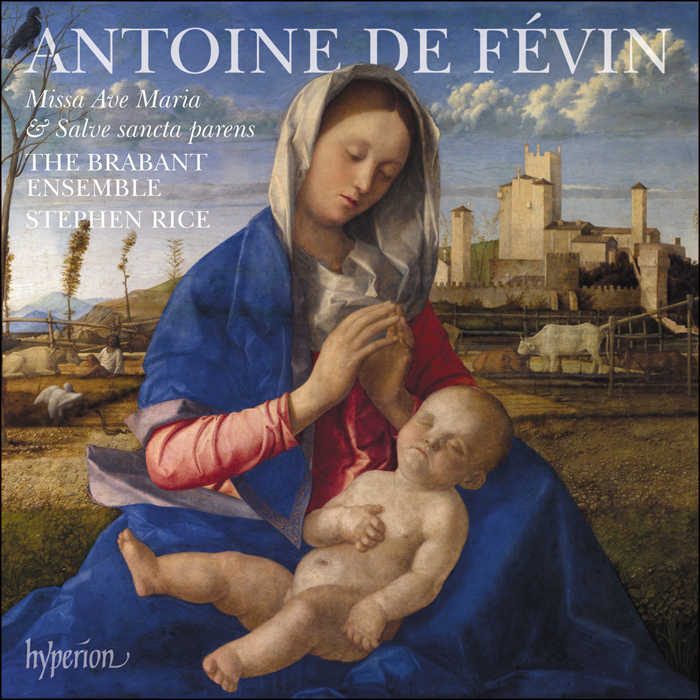Antoine de FÉVIN. Missae Ave Maria & Salve sancta parens —
The Brabant Ensemble
[8.10.2018]
hyperion-records.co.uk |
CDA 68265
release: 2 November 2018

Missa Ave Maria [33:11]
Ascendens Christus in altum [6:18]
Sancta Trinitas a 4 [3:20]
Sancta Trinitas a 6 [3:50] [Arnold von Bruck (?1500-1554)]
Salve sancta parens [0:42] [Anonymous - liturgical]
Missa Salve sancta parens [31:33]
[8.10.2018]
[5.1.2019]
medieval.org Remarks
http://www.medieval.org/emfaq/cds/remarks.html
1 January 2019
Todd M. McComb
———
Finally (for this little burst of entries), to step back into a
more technical orientation, particularly after enjoying
their La Rue disc (& the Missa
Inviolata — another setting on the Virgin — in
particular), I want to turn to The Brabant Ensemble's new
Févin program: This is another
very long album from them, packing in a lot of material (&
unfortunately using far too many track markers, as the Tallis
Scholars also did on their new Josquin album), and supported by a
quality technical discussion from Rice.
Regarding the prior rant,
I do often find Rice's group to be too "pretty" &
distant, but he does take a thoughtful (& not modernist) approach
to tuning & ficta, and so brings out a wealth of detail in
phrasing, etc. So that's good (& I believe that he, along with
Hyperion in general, reacts to the public preferences I mention
below by simply recording more quietly & with less presence,
which isn't ideal either...). So that said, Rice makes a good case
for hearing more from Févin, and this is an important program
to extend his large-scale discography beyond the Requiem.
Févin actually died before both La Rue & Josquin, although
he was apparently younger & writing in a somewhat newer style:
Indeed, the sometimes light tone (& homophonic or alternating
passages) suggest a later orientation (i.e. anticipate modern
smugness), but there are significant technical challenges as well,
particularly in working Josquin's famous Ave Maria into a
mass cycle. The latter is an example of early parody technique,
and seems to place the structural aspects almost secondarily:
There's a sort of "prettiness" to the music, almost to
the point that one might talk of "decorating" a structure,
and that's what Févin emphasizes. And it's quite decorated
— although in a very different mode from the swirling weirdness
of the contemporaneous Missa Ave Maria by Thomas Ashwell (as
discussed via swirling weirdness here in September, and as largely
absent such a structural skeleton). This is the sort of style that
leads into word painting, etc., and a comparison goes some way
toward answering Schmelzer's call for a consideration of the
distinctive quality of English (musical) aesthetics at this particular
(almost early modern) moment. (There's also the little swap, an
English group doing Continental music & vice versa.)
[ ... ]
[5.1.2019]
